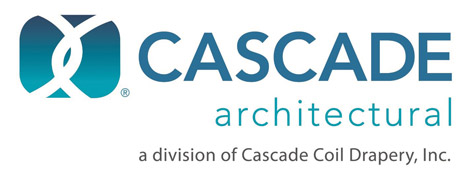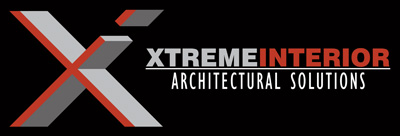This CE Center article is no longer eligible for receiving credits.
Coiled Wire Fabric for Separation and Transparency
There are many design situations where a need arises to provide a degree of separation for safety or different uses where a solid wall or partition is not needed. In fact, it may even be desirable to provide for some connectivity between spaces for visual, airflow, sound, or other considerations. A number of different products have been used to achieve this effect, particularly in interiors, but an emerging, innovative choice is the use of a coiled wire fabric. Such products are different from traditional metal mesh materials in that they are designed as architectural products for use as an interior finish material in a variety of ways.
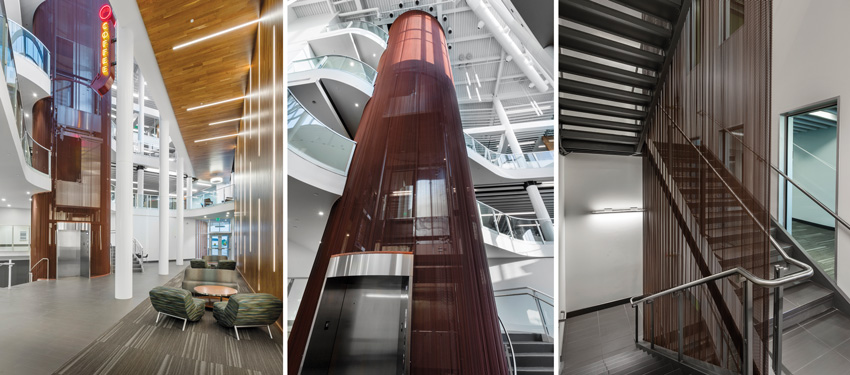
Photos courtesy of Cascade Architectural
At the VGM Group’s Iowa headquarters, coiled wire fabric was used both as a visual design element and safety feature around the elevator shaft and the stairways. In each case, they allowed a sense of visual transparency while still enclosing a space using a thin-profile coiled wire fabric.
Coiled wire fabric is a versatile product with wide-ranging applications and functions. It is a durable, thin material that is lighter in weight than traditional wire mesh and offers more design flexibility. For interiors, architects and designers can use coiled wire fabric for curtains, ceiling treatments, wall coverings, security gates, and even as complete partitions, all adding elegance and purpose to the spaces where they are used. They are available with a range of attachment systems, allowing for different building conditions and finish treatments. The material can be left to hang (i.e., flowing freely) or it can be secured at both the top and bottom and pulled taut to create a semi-rigid condition. Because of its fabric nature, curved and undulating shapes are easily achieved, providing interiors with more character and vitality than rectilinear shapes alone.

Photos courtesy of Cascade Architectural
Coiled wire fabric in
a vibrant green color was used as custom designed partitions at the expansion of the Terso Solutions production facility near Madison, Wisconsin. The undulating, floor-to-ceiling design elements help with wayfinding in the facility while providing an “aesthetic distraction” from the storage areas that were otherwise in plain sight to visitors.
When selecting a coiled wire fabric system for a project interior, it is important to recognize that there are a lot of different choices in the details of how it can be specified. Manufacturers will readily work with architects and designers to review the specific project requirements and suggest standard options or even engineer a custom solution. Here are some things to keep in mind when designing and specifying this innovative material:
- Material makeup. Coiled wire fabric systems begin with a base metal wire in varieties of steel, aluminum, brass, copper, or stainless steel. The choice of the wire material and its gauge impact the weight, functionality, and aesthetics of the final fabric. By altering the base material, wire gauges, weave pattern, and finishes, the strength, rigidity, and appearance can all be chosen to meet the design or performance characteristics being sought. It is worth noting that the fabric is available in virtually unlimited widths and up to 40 feet in length, so large installations can be achieved with a single panel in many cases. For projects needing more than a 40-foot span of fabric, multiple coils can be spliced together at the job site in a routine fashion and still create a continuous appearance.
- Light transparency. The nature of the woven-wire fabric is such that it will allow light to pass through, which is often desirable for many interior-design applications. How much light and how visually transparent a certain product appears will be based directly on the makeup of a particular fabric. Those with thicker wires and tighter weaves will obviously allow less light than those with thinner wires and more open weaves. Architects and designers can play with the material’s level of transparency by altering these factors to suit their needs to create a material that is simultaneously open and closed at the desired levels. As such, it is sometimes used over windows as a diffuser for natural daylight or as room separators where light is intended to be shared. “Fullness” is another factor that designers can alter to vary the level of light passing through the coiled wire fabric. By using more material than required to cover a given area, a billowing drapery effect may be achieved, causing the mesh to overlap which can be used to allow in more or less light.
- Formability. As with any fabric type of product, coiled wire fabric is free flowing and flexible. This means it can be formed and shaped to create undulating or curved surfaces, flat, taut surfaces, or a combination of any of these. Coiled wire fabric creates three-dimensional texture and spatial interest in rooms to achieve innovative and dynamic interior designs. This allows for a high degree of creativity in how spaces are defined and articulated, both for walls and ceilings.
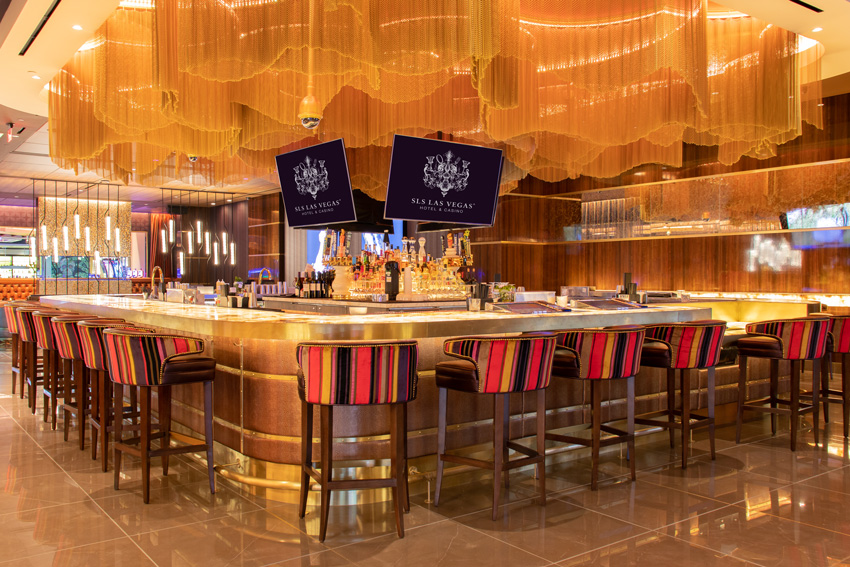
Photos courtesy of Cascade Architectural
- Color. Coiled wire fabric is available in either a natural, uncoated state or with resilient powder-coating finishes for a sharp, long-lasting aesthetic. The color choices are broad, allowing it to be a successful part of virtually any design scheme. Further, the finishes can be specified with low volatile organic compound (VOC) content or even Declare labels from the International Living Future Institute to protect human health when used on interiors.
- Performance traits. As a material added to a building interior, coiled wire fabric is a long-lasting and durable product requiring minimal, if any, maintenance. The open nature of the fabric is such that it can be used for solar shading, which can contribute to energy savings. It can also be used for light diffusion to further enhance the interior ambient lighting of a space. In appropriate strengths, it can provide partitioning for safety, fall protection, blast mitigation, and security. Further, if there is an interest in extending its use to the exterior, the material is durable enough to withstand those rigors as well.
- Sustainability. Coiled wire fabric carries many sustainability traits. Made from metal, it has a long service life as a durable product. It can contain recycled content and is 100 percent recyclable when it is removed from service. As an interior product, it is worth noting that no toxic chemicals are used in the material’s manufacturing process. Those products that carry Declare labels, like most coiled wire fabrics do, indicate the degree to which human health and the environment are protected by the products. Declare labels give consumers full transparency on the product, including from where it comes, of what it is made, and where it goes at the end of its life cycle.
- Cost effectiveness. Compared to the full construction of rigid partitions or other separation elements, coiled wire fabric is a very affordable option. It is also more economical than commercial woven-wire mesh that is typically designed for other purposes. This affordability lets architects and designers flex their creativity, produce signature interior designs, and turn projects with modest budgets into something unique, innovative, and responsive to project needs.
Designers who have used this product innovation have had some notable success with it. Kate Payne is managing architect at INVISION, the designers of a new headquarters building for the VGM Group in Iowa. The focal point of the project is the building’s open, five-story central atrium that features wood paneling inset with vertical lights; sleek, white ceilings, columns, and curved balconies; and an all-glass elevator shaft. As the interior-design phase was nearing completion, the project team was searching for a way to tie the theme of the exterior into the design scheme of the interior. To accomplish this, it chose aluminum coiled wire fabric finished in an antique copper color made from 5/16-inch 15-gauge wire at 15 percent fullness. The team paired that with a track attachment system to support the resulting 3,582-square-foot metal-fabric curtain that surrounded the glass elevator. Payne says, “We really liked the way we could pull the curtain taut around the elevator. It allows people to see through it when they’re inside the elevator, but it’s got that unique, heavy feel of metal. People are very drawn to it.”
Similarly, Bill Beaudreau, president of CRB Interiors, found an ideal solution in coiled wire fabric for a project whose client is a high-tech company. Terso Solutions is a leading technology company that produces RFID and inventory-management solutions for health-care and life-science organizations. The two-phase renovation included a partition to separate the entrance from the storage areas while simultaneously providing path guidance for occupants. CRB Interiors specified an operable coiled wire fabric partition to sculpt the open space, which proved to be the ideal solution. Beaudreau states, “The curtain—featuring a unique coiled wire material, bright green color, and curved track design—was the perfect design element to distract guests from a storage area that was previously in plain sight. Now, when guests or employees enter the building, the curtain steers them to the right and leads them to the core of the building.”
Given the versatility, adaptability, and performance characteristics inherent in this product, coiled wire fabric has proven itself in a variety of settings as a very appealing and affordable interior-design solution.
Interior design for commercial spaces is being directly influenced by a number of shifts in thinking about how interior spaces are used. Corporate and office work environments, for example, have been the subject of many studies and inquiries into current trends and preferences for the way spaces are designed. Some have found that “an innovative and thoughtfully designed workspace can increase employee engagement, productivity, and overall company performance.”1 Organizations like the World Economic Forum have taken some of these new studies on office design and declared older, 20th century models of office design as woefully out of date and in need of abandonment.2 Even industry leaders have undertaken their own research to find the link between human scientific issues and design.3 All of this work seems to point to the same implication for designers: innovation and creativity are needed now more than ever to produce interior environments that are fulfilling, appropriate, and current with the needs of the people who use those spaces. Based on this premise, this course will look at three readily available innovations that are being used to help align interior design with the 21st century thinking in our general society. Examples of applications and case studies will demonstrate how thinking beyond traditional means is good for everyone involved.
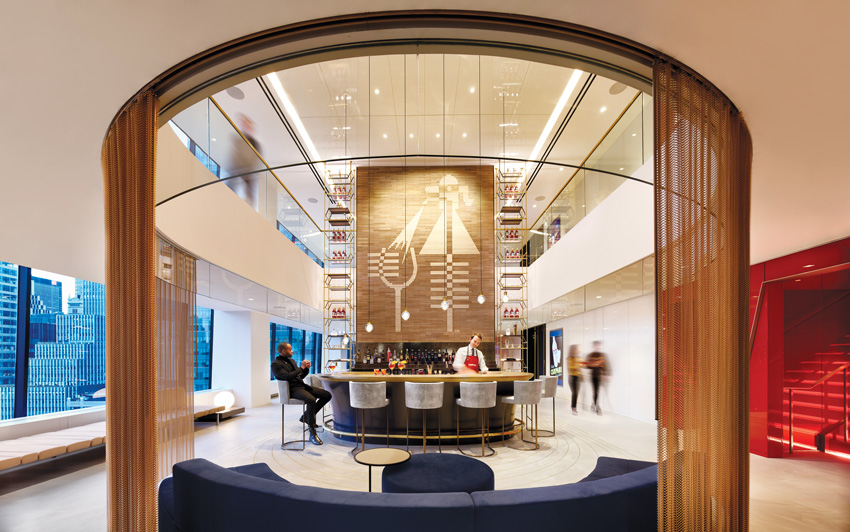
Photo courtesy of Cascade Architectural
There are many new outside influences on the way that building interiors are used. The appropriate response is to bring creativity and innovation to interior design to meet the needs of both building owners and users.
Opening Glass Walls
Interior space planning often relies on walls or partitions to separate different spaces from each other. However, there are plenty of reasons why that separation is not always desirable. In some cases, visual connectivity and transparency are desired between adjacent interior spaces. In others, there is a need for spaces to feel open, inviting, and collaborative instead of isolated and closed off. Yet in each of these conditions, there may still be some need for privacy, both visual and acoustical, whether to carry out concentrated work, confidential discussions, or contain noise emanating from audio presentations. The dilemma often facing designers is how to meet these competing criteria of separation and openness in a way that is consistent with the overall interior design of a building.
The solution to this dilemma is based on innovative approaches when looking at interior walls. Fixed glass partitions, for example, have been used in retail, office, and other settings to allow visual transparency, but they don’t allow access or physical expansion of the adjacent spaces. Placing doors in those walls helps with access but not with flexibility since they still create a sense of separation. An innovative and often preferred option is to incorporate opening glass walls between interior spaces.
In essence, an opening glass wall is technically defined as an operable system of door-sized glass wall panels that can be readily opened or closed across the full width of the wall on demand. Like any other type of glazed system, it does not carry any structural load from the building, but is reliant on being appropriately installed within a structurally supported opening. Typically, opening glass walls are full height or match standard door heights, although they can also be customized to suit many different sizing needs. They commonly range in width from as little as 9 feet wide up to as much as 300 feet wide. The individual glass wall panels are usually moved along a track at either the top or bottom, allowing the panels to operate in either a folding or sliding manner. In most settings, the intent is to allow the option of a large, uninterrupted opening between two interior spaces when that is desired or close off the two adjacent spaces when separation is needed.
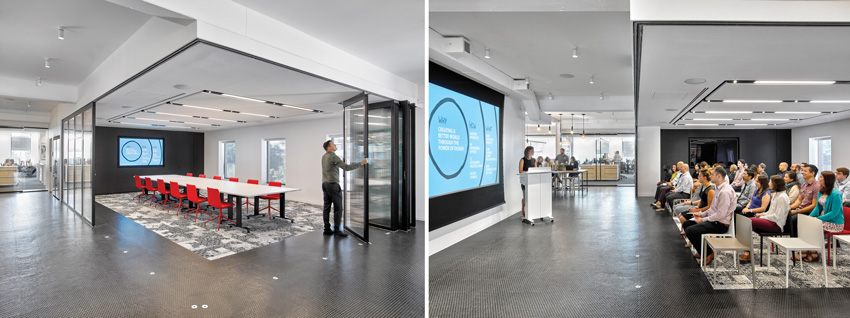
Photos courtesy of NanaWall Systems/© Garrett Rowland
Global architecture firm Gensler incorporated an opening glass wall in their own office in Morristown, New Jersey. This design gave the smaller meeting room dual functionality, as it can be used closed for private conferences or open as a venue for spontaneous sit-downs or larger meetings.
There are five innovations often cited that opening glass walls bring to the interior design of many commercial, institutional, and residential settings, including:
- Open concept with sound control. Opening glass walls can create the feeling of openness in a building. This can be important, particularly in corporate settings where the average size of an office has decreased by nearly a third over the past decade. Since many buildings seem to be taking up less real estate, opening glass walls for interiors help create a more spacious feel through an open design concept. Opening glass walls can thus make small spaces appear bigger, creating the illusion of being in a larger area.
While openness is desirable, acoustical performance is also critically important in many settings. Sound control and transparency are typically the “oil and water” of many indoor environments, such as offices, education, and health care. The down side of open-floor-plan environments is noise, which can counteract any of the benefits that might be experienced. Noise issues are particularly relevant to student performance within K–12 educational environments and productivity issues in workplaces.
The solution to these competing needs is to use an opening glass wall that is rated to control sound transfer. Standardized tests can be used to measure any opening glass wall to determine its sound transmission class (STC) ratings and outdoor/indoor transmission class (OITC) ratings. Floor-supported folding opening glass walls have been independently tested to achieve ratings up to STC 45 with a flush sill that is ADA compliant. Frameless, all-glass operable walls provide better sound buffering than many fixed all-glass partitions, providing ratings up to STC 36. When the wall is closed, an all-glass aesthetic is realized with the added benefit of acoustical sound privacy.
These ratings are typically achieved by paying attention to the details of both the frame mechanisms and the actual glass used. The frames typically employ seals and gaskets of different types to close up any gaps between the individual panel sections when the wall is in the closed position. The glass can be Sept-Multi-paned or even laminated to provide high-performance sound control. All of these measures help assure that conversations remain private and inside the room. At the same time, it helps to keep out unwanted noise that originates from outside the space. Hence, when an operable wall is closed, it provides the people inside of the room sound separation from the adjacent spaces. When that need is no longer required, the opening glass wall can be opened back up.
- Flexible spaces. Operable glass wall designs offer an adaptable environment for growing companies, multifunctional school settings, retail stores, hospitality venues, residences, and many other building types. Not only is it affordable to create rooms with glass partitions compared to building traditional walls, but it is also easy to create a flexible or adaptable environment where spaces can be simply opened or closed. This is achieved by selecting the most appropriate style of glass panels and operating mechanisms. In many cases, a folding panel system will likely suffice with easy-to-use and smooth operating parts. In others, a sliding system may make more sense, with panels sliding on multiple tracks and stacking to one or both sides or on a single track with the panels disappearing into a designed recess.
- Private spaces with a sense of openness. In many workplace and educational settings, there is an emphasis on openness to foster creativity and collaboration between the people who spend their time in those places. By using opening glass wall designs, a feeling of connectedness and teaming is more easily achieved than with designs that foster only separation and isolation. Innovative spaces are also becoming much more preferred over cubicle-style designs that are referred to as “open office plans” but are falling out of favor in many design circles.
- Natural light and views. Opening glass walls can be customized to allow natural daylight to penetrate deeper into a building and feature views to the outside. Daylight and views not only make the interior look more appealing, but they have also been shown to offer real human health benefits. Boosting the availability of daylight has been shown to put people in better moods, help with their natural circadian rhythms, and increase learning aptitude and productivity. Access to views has been demonstrated to decrease anxiety, provide visual relief, and help reduce eyestrain. Further, when the view is to a natural area, it can support the biophilia hypothesis, which suggests that people have an innate tendency to seek connections to nature and life in general. Overall, studies show that designs that bring in more natural light offer a healthier workplace while also saving on energy costs.
Not to be overlooked, the transparency of glass walls may be unsettling for some people. Most people don’t want to feel like they have no visual privacy or are on display all the time. There are solutions for this as well through the use of tinted or frosted glass on selected areas of the glass wall. There can still be clear sections if desired, while translucent areas can provide some additional privacy and still allow light to pass through. Directly along this same line, and in the spirit of true flexibility, at least one manufacturer provides an operable glass-wall solution that takes this concept a bit further. It uses a dynamic, individual panel, frameless opening glass wall system that offers instant opaque privacy or transparent connectivity at the touch of a button. Use of such dynamic glass means that curtains, blinds, or other privacy products are not necessary.
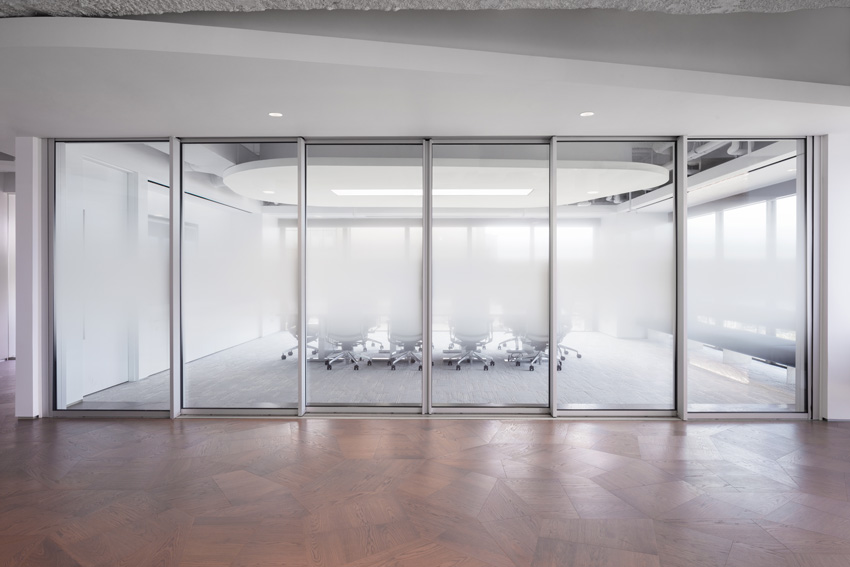
Photo courtesy of NanaWall Systems
This opening glass wall was designed by Gensler for the Visa One Market in San Francisco. The central areas of the glass panels were artistically fitted with a frosted film that provides visual privacy for meetings but still passes full daylight illumination through the wall.
- Responding to changing functionalities. Many building uses and functions change over time. Operable glass walls are inherently designed to be flexible so they can more readily accommodate those changes. Their typically clean and simple look can complement just about any design approach, whether new, existing, or modified. From a performance standpoint, glass can retain its like-new appearance for much longer than other wall-material options, making it inherently long lasting.
Opening glass walls clearly provide flexibility, innovation, and the ability to customize an interior design that will be enjoyed and perform well for many years of service.
Coiled Wire Fabric for Separation and Transparency
There are many design situations where a need arises to provide a degree of separation for safety or different uses where a solid wall or partition is not needed. In fact, it may even be desirable to provide for some connectivity between spaces for visual, airflow, sound, or other considerations. A number of different products have been used to achieve this effect, particularly in interiors, but an emerging, innovative choice is the use of a coiled wire fabric. Such products are different from traditional metal mesh materials in that they are designed as architectural products for use as an interior finish material in a variety of ways.

Photos courtesy of Cascade Architectural
At the VGM Group’s Iowa headquarters, coiled wire fabric was used both as a visual design element and safety feature around the elevator shaft and the stairways. In each case, they allowed a sense of visual transparency while still enclosing a space using a thin-profile coiled wire fabric.
Coiled wire fabric is a versatile product with wide-ranging applications and functions. It is a durable, thin material that is lighter in weight than traditional wire mesh and offers more design flexibility. For interiors, architects and designers can use coiled wire fabric for curtains, ceiling treatments, wall coverings, security gates, and even as complete partitions, all adding elegance and purpose to the spaces where they are used. They are available with a range of attachment systems, allowing for different building conditions and finish treatments. The material can be left to hang (i.e., flowing freely) or it can be secured at both the top and bottom and pulled taut to create a semi-rigid condition. Because of its fabric nature, curved and undulating shapes are easily achieved, providing interiors with more character and vitality than rectilinear shapes alone.

Photos courtesy of Cascade Architectural
Coiled wire fabric in
a vibrant green color was used as custom designed partitions at the expansion of the Terso Solutions production facility near Madison, Wisconsin. The undulating, floor-to-ceiling design elements help with wayfinding in the facility while providing an “aesthetic distraction” from the storage areas that were otherwise in plain sight to visitors.
When selecting a coiled wire fabric system for a project interior, it is important to recognize that there are a lot of different choices in the details of how it can be specified. Manufacturers will readily work with architects and designers to review the specific project requirements and suggest standard options or even engineer a custom solution. Here are some things to keep in mind when designing and specifying this innovative material:
- Material makeup. Coiled wire fabric systems begin with a base metal wire in varieties of steel, aluminum, brass, copper, or stainless steel. The choice of the wire material and its gauge impact the weight, functionality, and aesthetics of the final fabric. By altering the base material, wire gauges, weave pattern, and finishes, the strength, rigidity, and appearance can all be chosen to meet the design or performance characteristics being sought. It is worth noting that the fabric is available in virtually unlimited widths and up to 40 feet in length, so large installations can be achieved with a single panel in many cases. For projects needing more than a 40-foot span of fabric, multiple coils can be spliced together at the job site in a routine fashion and still create a continuous appearance.
- Light transparency. The nature of the woven-wire fabric is such that it will allow light to pass through, which is often desirable for many interior-design applications. How much light and how visually transparent a certain product appears will be based directly on the makeup of a particular fabric. Those with thicker wires and tighter weaves will obviously allow less light than those with thinner wires and more open weaves. Architects and designers can play with the material’s level of transparency by altering these factors to suit their needs to create a material that is simultaneously open and closed at the desired levels. As such, it is sometimes used over windows as a diffuser for natural daylight or as room separators where light is intended to be shared. “Fullness” is another factor that designers can alter to vary the level of light passing through the coiled wire fabric. By using more material than required to cover a given area, a billowing drapery effect may be achieved, causing the mesh to overlap which can be used to allow in more or less light.
- Formability. As with any fabric type of product, coiled wire fabric is free flowing and flexible. This means it can be formed and shaped to create undulating or curved surfaces, flat, taut surfaces, or a combination of any of these. Coiled wire fabric creates three-dimensional texture and spatial interest in rooms to achieve innovative and dynamic interior designs. This allows for a high degree of creativity in how spaces are defined and articulated, both for walls and ceilings.

Photos courtesy of Cascade Architectural
- Color. Coiled wire fabric is available in either a natural, uncoated state or with resilient powder-coating finishes for a sharp, long-lasting aesthetic. The color choices are broad, allowing it to be a successful part of virtually any design scheme. Further, the finishes can be specified with low volatile organic compound (VOC) content or even Declare labels from the International Living Future Institute to protect human health when used on interiors.
- Performance traits. As a material added to a building interior, coiled wire fabric is a long-lasting and durable product requiring minimal, if any, maintenance. The open nature of the fabric is such that it can be used for solar shading, which can contribute to energy savings. It can also be used for light diffusion to further enhance the interior ambient lighting of a space. In appropriate strengths, it can provide partitioning for safety, fall protection, blast mitigation, and security. Further, if there is an interest in extending its use to the exterior, the material is durable enough to withstand those rigors as well.
- Sustainability. Coiled wire fabric carries many sustainability traits. Made from metal, it has a long service life as a durable product. It can contain recycled content and is 100 percent recyclable when it is removed from service. As an interior product, it is worth noting that no toxic chemicals are used in the material’s manufacturing process. Those products that carry Declare labels, like most coiled wire fabrics do, indicate the degree to which human health and the environment are protected by the products. Declare labels give consumers full transparency on the product, including from where it comes, of what it is made, and where it goes at the end of its life cycle.
- Cost effectiveness. Compared to the full construction of rigid partitions or other separation elements, coiled wire fabric is a very affordable option. It is also more economical than commercial woven-wire mesh that is typically designed for other purposes. This affordability lets architects and designers flex their creativity, produce signature interior designs, and turn projects with modest budgets into something unique, innovative, and responsive to project needs.
Designers who have used this product innovation have had some notable success with it. Kate Payne is managing architect at INVISION, the designers of a new headquarters building for the VGM Group in Iowa. The focal point of the project is the building’s open, five-story central atrium that features wood paneling inset with vertical lights; sleek, white ceilings, columns, and curved balconies; and an all-glass elevator shaft. As the interior-design phase was nearing completion, the project team was searching for a way to tie the theme of the exterior into the design scheme of the interior. To accomplish this, it chose aluminum coiled wire fabric finished in an antique copper color made from 5/16-inch 15-gauge wire at 15 percent fullness. The team paired that with a track attachment system to support the resulting 3,582-square-foot metal-fabric curtain that surrounded the glass elevator. Payne says, “We really liked the way we could pull the curtain taut around the elevator. It allows people to see through it when they’re inside the elevator, but it’s got that unique, heavy feel of metal. People are very drawn to it.”
Similarly, Bill Beaudreau, president of CRB Interiors, found an ideal solution in coiled wire fabric for a project whose client is a high-tech company. Terso Solutions is a leading technology company that produces RFID and inventory-management solutions for health-care and life-science organizations. The two-phase renovation included a partition to separate the entrance from the storage areas while simultaneously providing path guidance for occupants. CRB Interiors specified an operable coiled wire fabric partition to sculpt the open space, which proved to be the ideal solution. Beaudreau states, “The curtain—featuring a unique coiled wire material, bright green color, and curved track design—was the perfect design element to distract guests from a storage area that was previously in plain sight. Now, when guests or employees enter the building, the curtain steers them to the right and leads them to the core of the building.”
Given the versatility, adaptability, and performance characteristics inherent in this product, coiled wire fabric has proven itself in a variety of settings as a very appealing and affordable interior-design solution.
Modern Interior Trim
Interior wall and ceiling surfaces are commonly finished with gypsum board or other panelized materials. The details of how the edges of those surfaces are finished has always been an important interior-design element. Historically, wood or vinyl base has been used as a transition between walls and floors, while some type of crown molding has been used at the wall and ceiling intersection. However, in more contemporary or modern designs, such traditional details don’t always match the rest of the design intent. Nonetheless, all design schemes need to address how the vertical and horizontal planes of a space meet visually. Similarly, for large wall and ceiling areas, breaking up those areas with a pattern or relief has long been a favored interior-design approach. Here again, wood paneling techniques have been the historical norm, while alternatives have been sought for more contemporary designs.
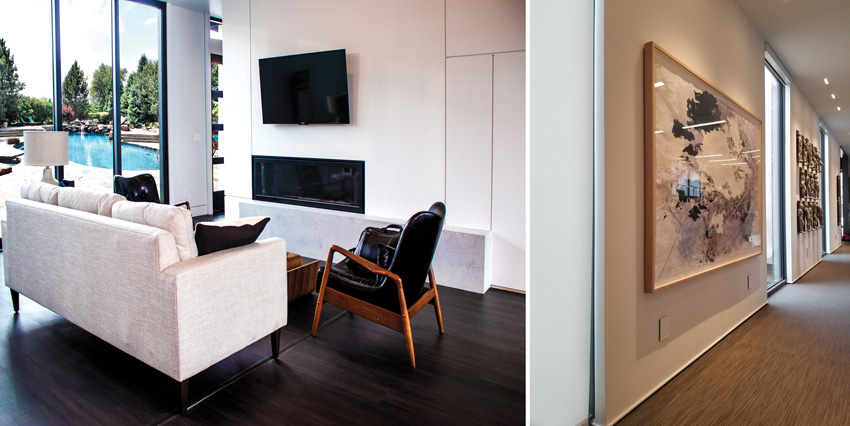
Photos courtesy of XtremeInterior by Tamlyn
In these two different projects, extruded aluminum trim is used to give ordinary gypsum board walls a newer, cleaner, more contemporary look by defining wall panels, ceiling intersections, and wall bases instead of using traditional wood or other products.
Recognizing the need for an alternative to wood interior trim, product manufacturers have introduced an innovative alternative through the extruded aluminum interior trim profiles. The impetus came from demand, as Dana Madden, the architectural product manager with XtremeInterior by Tamlyn, points out: “Across every market right now, we’re seeing a big push for clean lines in design. You still need the functionality of having some type of protective edge for your drywall—it can’t just simply meet the floor. You still have to have something there that protects that bottom edge for maintenance, durability, and housekeeping. But in residential, multifamily, retail, food and beverage, hospitality, and more, everybody is going to a little bit more of a cleaner look.” Some of this cleaner preference may be coming from a strong European influence on interior design, while in younger generations, clean lines represent a feel that is more progressive, interesting, and satisfying. With this in mind, here are some ways that extruded aluminum trim are transforming many building interior designs:
- Design versatility. This is where the use of sleek and contemporary aluminum trim designs offers great appeal. Whether the intent is to see the aluminum as a distinct product or for it to blend in with the surrounding wall, it is versatile enough to be used in creating straight lines, reveals, relief profiles, and innovative corner conditions. Even more interesting to many designers, aluminum extrusions can be the basis to easily create a pattern, relief element, or graphic design focus that is incorporated into drywall installations. That means it’s almost limitless in design options as far as installing simple trim pieces in a grid pattern, diagonally, or other geometric configurations. It’s even possible to design something rather abstract and, for an added effect, hide small LED light strips in them. All of this means that there is inherent flexibility in creating wall designs where the limits are only bounded by the imaginations of the designers.
This interior-wall design approach is being played out in both new and renovation projects of retail spaces, health care, offices, hospitality, and restaurants. For example, global design firm Gensler has been working on a new look for McDonald’s restaurants across the United States. The result is a complete overhaul and updated aesthetic for the facilities all across the country, starting with the first one in Chicago. For variety, Gensler has provided up to five different designs from which each of these locations can choose. In this way, the look is modern and high quality, but not all McDonald’s are going to look exactly the same because they can pick what works best for their demographic, area, climate, etc. In corporate settings too, the clean and minimalist look is very popular. No longer are office designs driven by the large, dark wood boardrooms of the past but by more of an appreciation for clean spaces that avoid looking sterile by providing texture and character. The focus is clearly on creating contemporary, clean designs.
- Reveals and projections. Wayne Braun is a designer who has 40 years of experience with a firm known as PDR in Houston that focuses on office and work environments. He points out, “There’s nothing more effective and less expensive and less difficult to deal with than sheetrock and paint. So that’s still the basis for a lot of innovative ideas when refining interior spaces. If we assume that we are going to work with sheetrock and paint to keep the costs down, we can enhance it with things like inset aluminum reveals that might be, say, a half inch wide, a half inch deep. In this way, we can create a rhythm or panel-like effect on sheetrock that can be quite stunning.” He goes on to describe how extruded aluminum trim be used as a base condition where a gypsum board wall meets the floor: “We can use a reveal without a base and create the illusion that it’s a more substantial piece of, I’ll say millwork, that’s been brought into the space. This makes the experience more like what you would see in a museum, but it’s still sheetrock and paint. So we can greatly enhance the use of very, very common materials by giving it these extra details.”
In addition to cutting in reveals to create a pattern, there is also sometimes the desire to create a three-dimensional look with trim that projects outward in some fashion from the wall surface. Designers have historically needed to apply either wood or metal trim over the drywall in order to get that look, and often they have been custom designed and made, introducing an unexpected cost. By comparison, extruded aluminum trim can create elements that stand off or project out from the wall and then recede back and project out again if desired, all with one continuous piece. This allows for a very economical means to achieve a greater degree of texture, geometry, and shadow lines, which can create drama and character in an otherwise bland space.
- Color. Aluminum extrusions offer choices and variations when it comes to color as well. As with most aluminum products, clear anodized aluminum is standard, but aluminum trim is readily available in many other choices too. Specifying a primed finish is possible so that when it’s installed and painted with a surrounding wall surface, the trim can be any color desired. It can match the rest of the wall exactly, creating only texture, or it can be painted in a contrasting or complementary color depending on the overall color scheme desired. There are also the full range of anodized trim colors, including different shades of bronze, black, champagne, etc. Some manufacturers will even offer a pre-painted powder-coat finish, which allows for virtually any color to be selected or matched and specified.
- Custom options. Interior trim made from extruded aluminum is available in a wide range of standard profiles, but for jobs of a reasonable size, it is also quite possible to work with a manufacturer to obtain custom profiles for wall bases, ceiling/wall transitions, interior and exterior corners, or other applications. Custom profiles don’t necessarily need to be budget concerns either since it can be quite economical to simply create a small die that is the basis of the new extrusion. Such customization isn’t limited to shape, as it is also possible to incorporate custom finishes onto the trim. At least one manufacturer makes a custom film available that can offer any appearance desired, including a wood-grain pattern over the aluminum in cases where the look of wood is sought but also the durability of aluminum. For one application in a retail store selling blue jeans, the trim was finished to look like denim. Virtually any other appearance that can be designed onto the film can be accommodated.
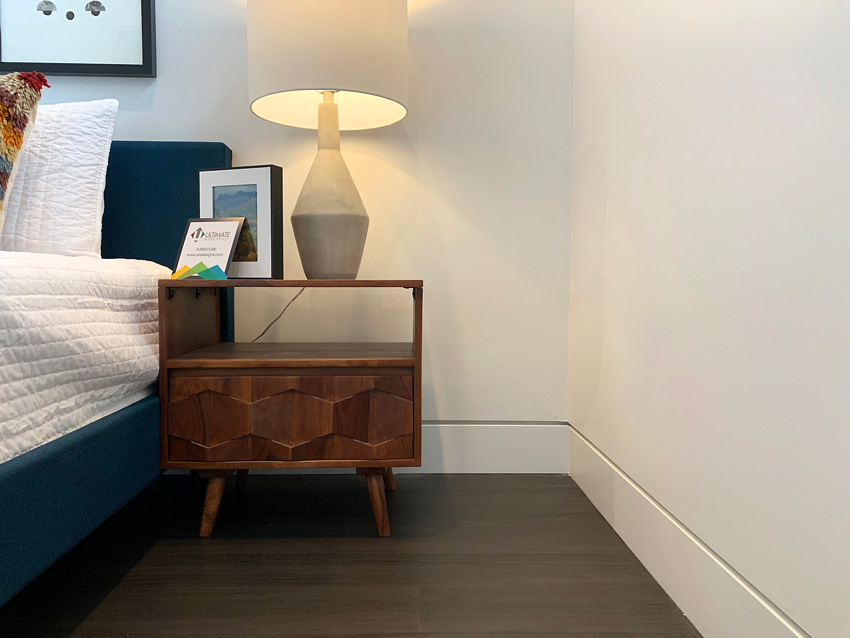
Photo courtesy of XtremeInterior by Tamlyn
Aluminum wall trim is used to create a very clean and contemporary look with both a flush wall base condition and drywall reveal in this hospitality setting.
- Other characteristics. Using aluminum trim for interiors brings some other familiar characteristics as well. It is a very sustainable product since it uses predominantly recycled material and can be fully recycled at the end of its service life. It’s also very durable and long lasting, eliminating the need for maintenance or replacement as with wood or vinyl trim. It is easy to work with and install using standard tools by various tradespeople, including carpenters, framers, and sheetrock installers. It also plays very well into the trend for using more manufactured products in construction and thus reducing the amount of skilled labor in the field. The trim can be precisely and consistently produced in a factory setting and then shipped and installed in standard manner on-site.
Overall, extruded aluminum trim is a very cost-effective, appealing option for many design situations that provides great flexibility and versatility. Standard or custom profiles and finishes can be used to create innovative interiors that move designs to the next level.
Conclusion
Innovation in interior design to meet changing client and building-user demands can take many forms. Opening glass walls provide flexibility, transparency, and the ability to meet changing needs over time. Coiled wire fabric offers a creative and sustainable approach to separating and enclosing spaces with light and transparency. Aluminum interior trim offers clean lines and versatility in design. These and many options like them allow design professionals the freedom and flexibility to meet modern building demands in creative and even exciting ways.
End Notes
1Hershfield, Michael. “The real science behind innovative offices.” WeWork Companies. 21 May 2019. Web. 29 July 2019.
2Jezard, Adam. “The traditional office is dead. Here’s why.” World Economic Forum. 1 Nov. 2019. Web. 29 July 2019.
3“Optimizing the Workplace for Innovation: Using Brain Science for Smart Design.” Haworth. 2017. Web. 29 July 2019.
Peter J. Arsenault, FAIA, NCARB, LEED AP, is a nationally known architect, consultant, continuing education presenter, and prolific author advancing building performance through better design. www.pjaarch.com, www.linkedin.com/in/pjaarch












